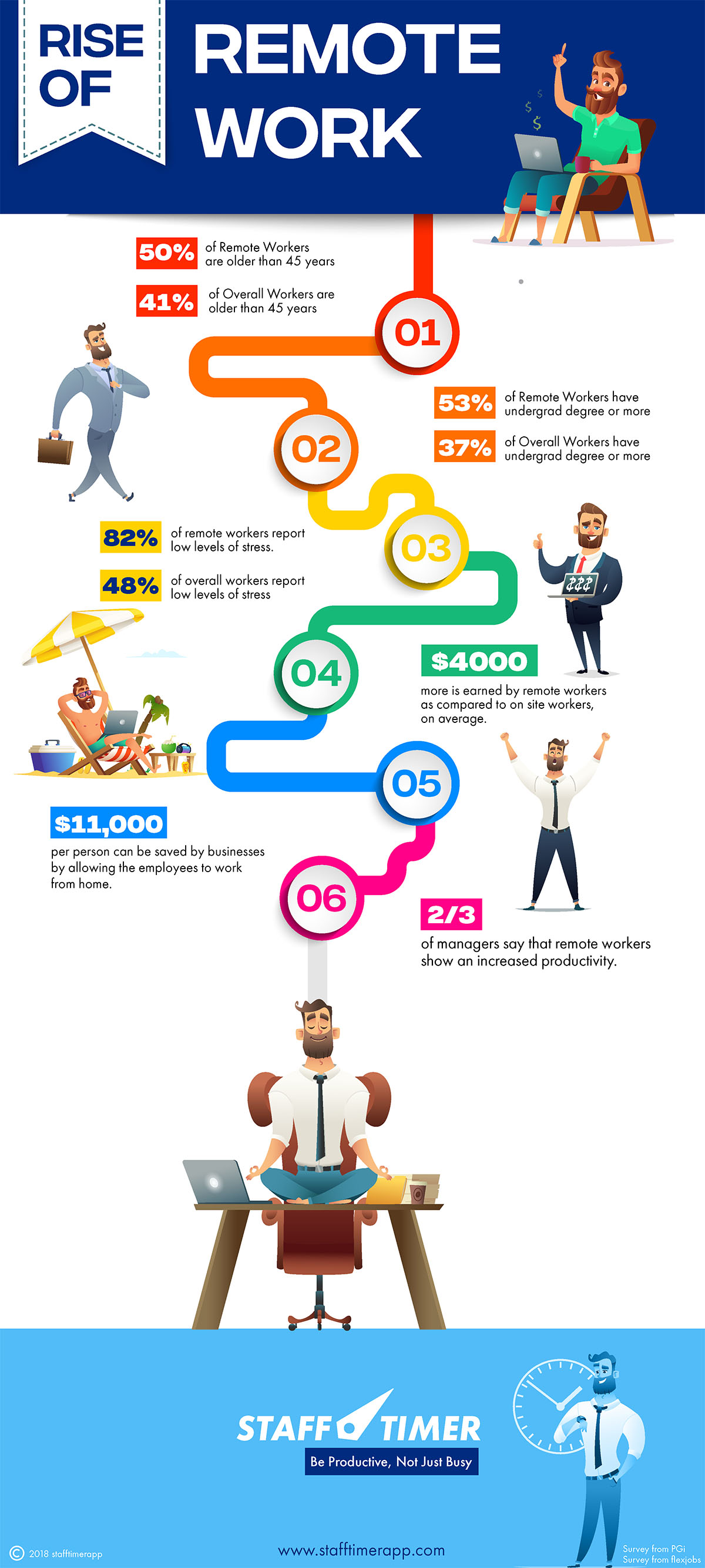A few decades ago, no one would have considered working from home as something practical. Working from home was pretty much limited to cottage industries and women who were stay-at-home moms and worked on the side to generate an extra income. But anyone with serious career aspirations would never have considered remote working even in his wildest dreams!
But today, the world is a different place! The advancement of technology and the dependable connectivity and networking services have made possible the unthinkable. Today, remote jobs from home are not only practical but are also becoming the first choice of contemporary professionals and especially the millennials.
Why people enjoy Remote Working
Due to the following reasons, more and more people are opting for remote working options and making the rise of the remote work a reality.
- Remote jobs from home save time. The time spent on traveling to and from the formal workplace is saved. Moreover, while in an office, colleagues spend a lot of time on water-cooler gossips and extended meeting periods. While working from home, this time is saved.
- Remote work saves money. The freelancers and telecommuters do not feel the need to spend an excessive amount of money on maintaining up-to-date wardrobe. They also save the money that is spent on commuting to the office. The employers also benefit from Remote working options as they do not have to pay the overhead costs of having in-house workers. Also, from the employer’s perspective, the employee is only paid for the work that he has delivered. Therefore, the employer saves money as well.
- Remote workers find it desirable to work from the comfort of their home office. They like being the boss and master of their own schedule. With the option of working from home, the employees can schedule the day according to their own personal needs. A night owl and a day lark can work without disrupting their natural tendencies.
- Telecommuters cherish the ability to work from home as it allows them to have a balanced life, without spending long hours in the workplace. Many women opt for work from home options when they start having children. This enables them to stay in touch with work while having a fulfilling personal life.

How Remote Work became a Reality
Remote Working has become possible due to the following reasons.
- The availability of the internet and its improving quality. Just a couple decades ago, the internet quality at most places around the world was not dependable. Fiber optic faults under the sea made the internet unreliable. But now, the situation is very different. Stable internet connection is a reality at most places in the world.
- The innovation of networking applications and their availability to the users at low cost. For example, Time Tracking Software like StaffTimerApp has enhanced the trust of employers in their distributed teams.
- The increasing demand for knowledge worker and less focus on physical availability and more on getting good quality work done. Today, professionals like software developers and computer scientists can work from anywhere and are always in demand!
Conclusion
The Rise of Remote Work has become a reality of the modern workplace. It is predicted that more than half of the workers in the USA will be working remotely. This is due to the democratization of amazing technology that makes collaborations for the remote teams easier!
